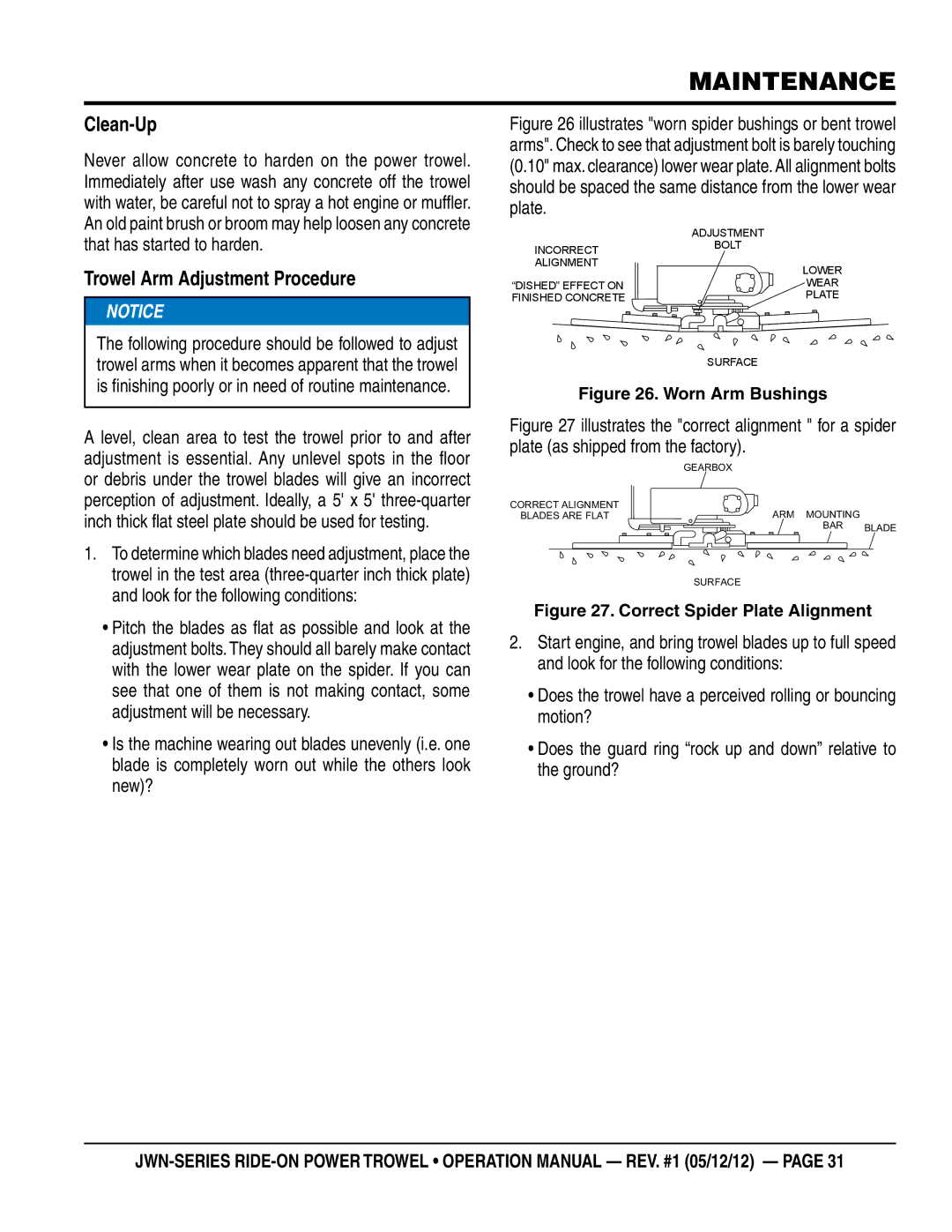
maintenance
Clean-Up
Never allow concrete to harden on the power trowel. Immediately after use wash any concrete off the trowel with water, be careful not to spray a hot engine or muffler. An old paint brush or broom may help loosen any concrete that has started to harden.
Trowel Arm Adjustment Procedure
![]()
![]() NOTICE
NOTICE
The following procedure should be followed to adjust trowel arms when it becomes apparent that the trowel is finishing poorly or in need of routine maintenance.
A level, clean area to test the trowel prior to and after adjustment is essential. Any unlevel spots in the floor or debris under the trowel blades will give an incorrect perception of adjustment. Ideally, a 5' x 5'
1.To determine which blades need adjustment, place the trowel in the test area
•Pitch the blades as flat as possible and look at the adjustment bolts. They should all barely make contact with the lower wear plate on the spider. If you can see that one of them is not making contact, some adjustment will be necessary.
•Is the machine wearing out blades unevenly (i.e. one blade is completely worn out while the others look new)?
Figure 26 illustrates "worn spider bushings or bent trowel arms". Check to see that adjustment bolt is barely touching (0.10" max. clearance) lower wear plate. All alignment bolts should be spaced the same distance from the lower wear plate.
| ADJUSTMENT | |
INCORRECT | BOLT | |
| ||
ALIGNMENT | LOWER | |
| ||
“DISHED” EFFECT ON | WEAR | |
PLATE | ||
FINISHED CONCRETE | ||
|
SURFACE
Figure 26. Worn Arm Bushings
Figure 27 illustrates the "correct alignment " for a spider plate (as shipped from the factory).
| GEARBOX |
|
CORRECT ALIGNMENT | ARM MOUNTING |
|
BLADES ARE FLAT |
| |
| BAR | BLADE |
SURFACE
Figure 27. Correct Spider Plate Alignment
2.Start engine, and bring trowel blades up to full speed and look for the following conditions:
•Does the trowel have a perceived rolling or bouncing motion?
•Does the guard ring “rock up and down” relative to the ground?
